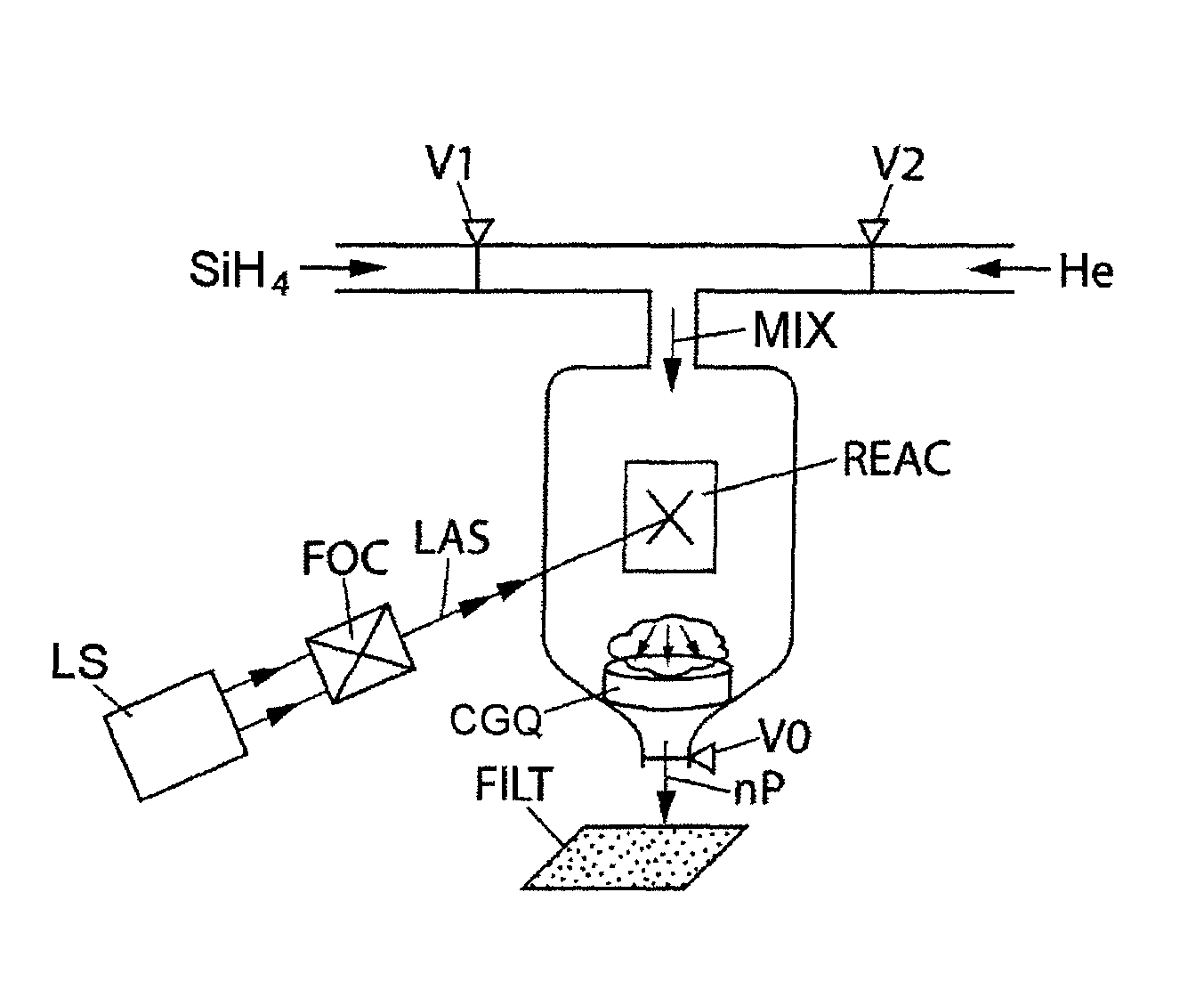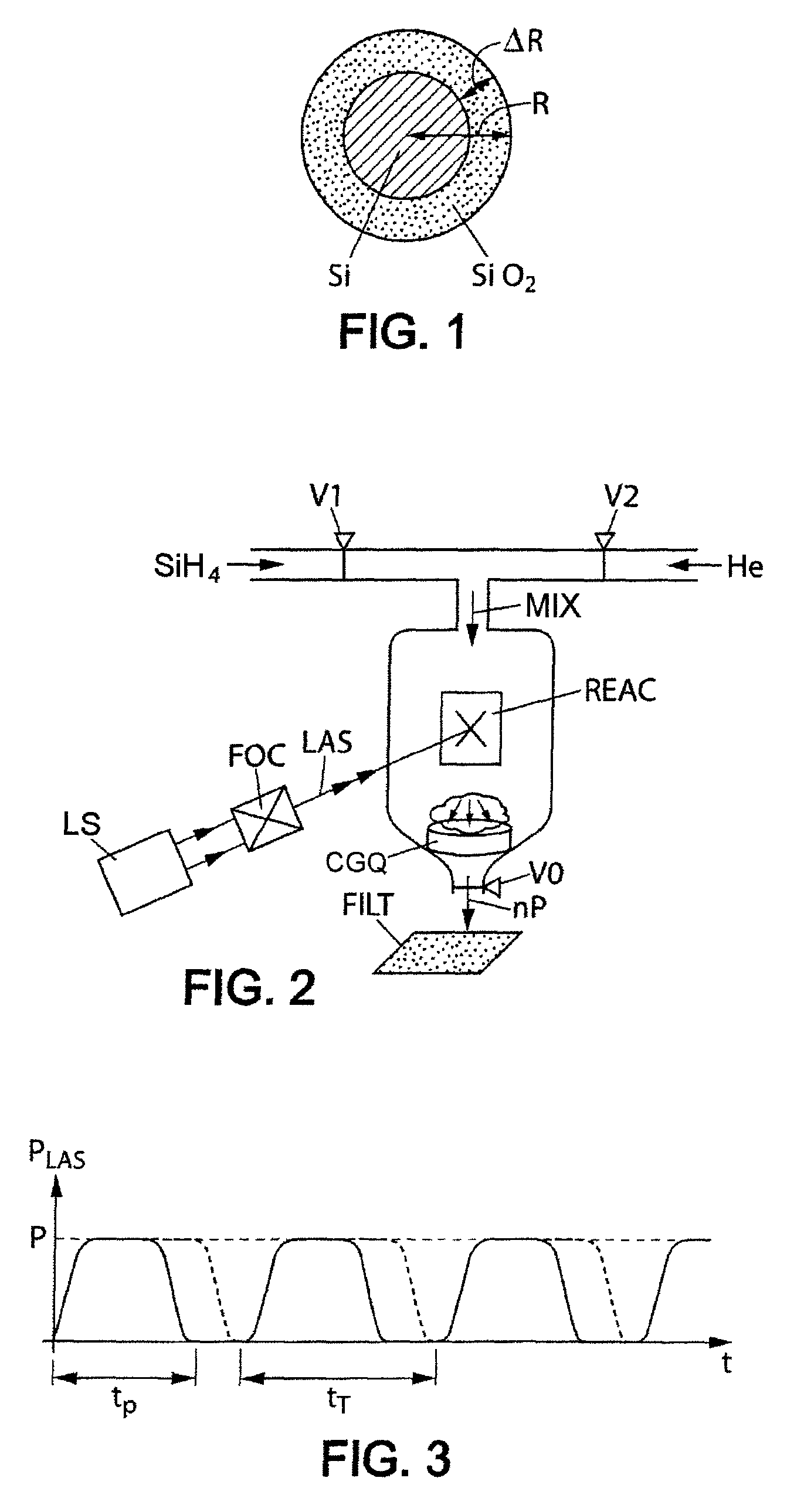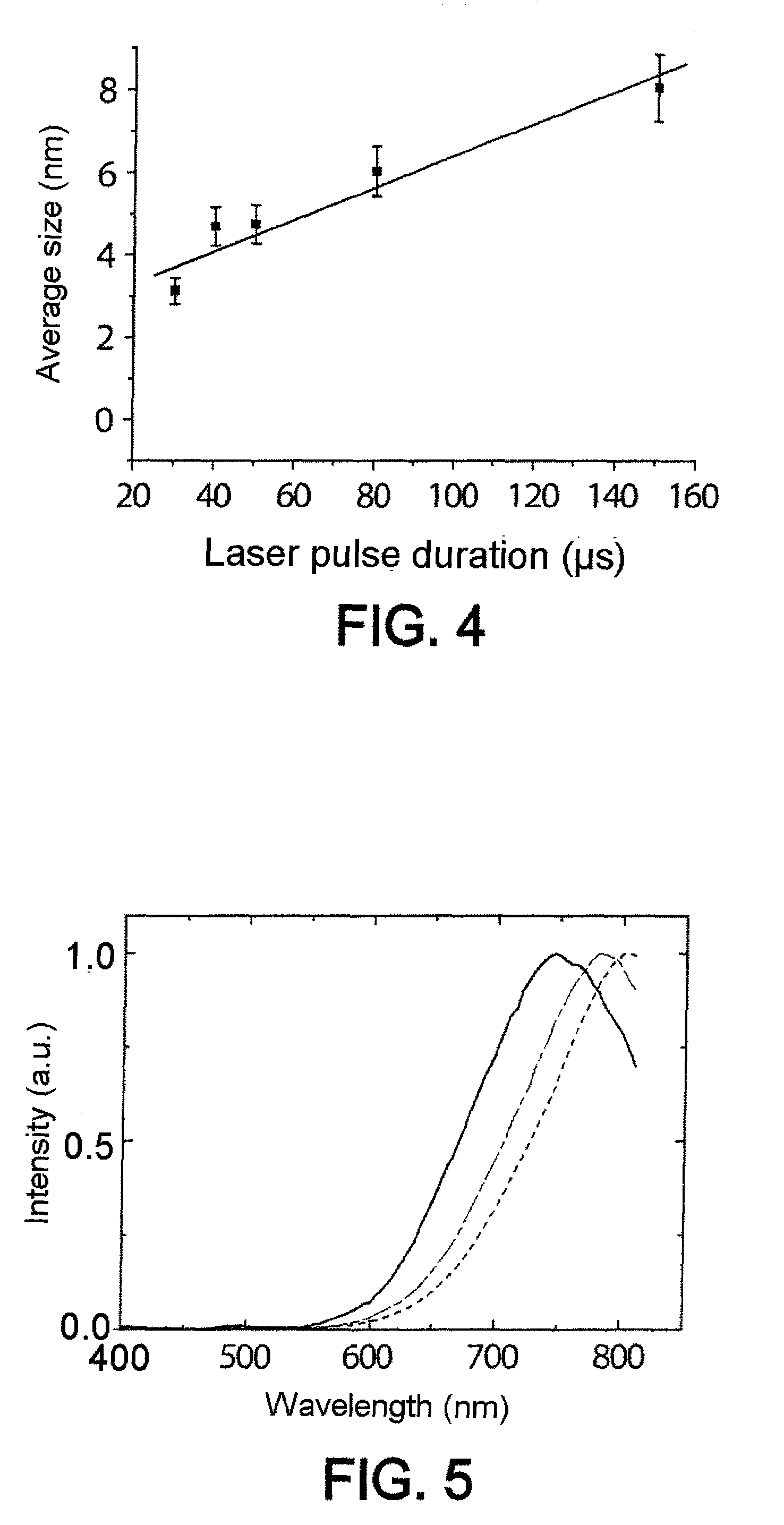Synthesis of silicon nanocrystals by laser pyrolysis
a technology of laser pyrolysis and silicon nanocrystals, which is applied in the field of synthesis of silicon nanocrystals by laser pyrolysis, can solve the problems of inability to meet the requirements of industrial applications, low yield, and long implementation time of liquid phase approaches, etc., and achieves the effects of increasing the production rate, increasing the size of particles, and limited particle growth time in the reaction zon
- Summary
- Abstract
- Description
- Claims
- Application Information
AI Technical Summary
Benefits of technology
Problems solved by technology
Method used
Image
Examples
Embodiment Construction
[0042]Referring to FIG. 2, a precursor containing the element silicon, in gaseous form, and more precisely silane SiH4 in the exemplary embodiment described, is mixed with an inert gas, here helium He, as carry fluid. Preferably, the dilution of the precursor in the carrier fluid is between 1 / 10 and 1 / 30. In the embodiment described, the dilution is controlled by the two valves V1 and V2 in FIG. 2. The mixture of the two gases, with the reference MIX in FIG. 2, is conveyed into a reaction chamber REAC at a pressure controlled by a pressure gauge V0. The pressure of the mixture is preferably between 150 and 300 torr. A mass flow rate regulator system, comprising the valves V1 and in particular V2, is used for also controlling the gas flow rate and in particular the carrier stream (arrow He) in the reaction chamber REAC. The carrier fluid flow rate here is between 600 and 2000 sccm, which corresponds, under the experimental conditions of the trials carried out and described below, to ...
PUM
| Property | Measurement | Unit |
|---|---|---|
| power | aaaaa | aaaaa |
| power | aaaaa | aaaaa |
| pressure | aaaaa | aaaaa |
Abstract
Description
Claims
Application Information
 Login to View More
Login to View More - R&D
- Intellectual Property
- Life Sciences
- Materials
- Tech Scout
- Unparalleled Data Quality
- Higher Quality Content
- 60% Fewer Hallucinations
Browse by: Latest US Patents, China's latest patents, Technical Efficacy Thesaurus, Application Domain, Technology Topic, Popular Technical Reports.
© 2025 PatSnap. All rights reserved.Legal|Privacy policy|Modern Slavery Act Transparency Statement|Sitemap|About US| Contact US: help@patsnap.com



